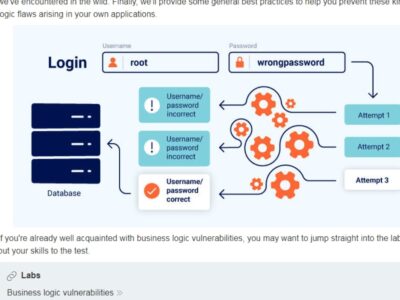Interest in blockchain technology is growing exponentially, and new applications are emerging almost daily. While it will take time for the disruptive power of this technology, on which cryptocurrencies are based, to unfold, digital marketers, in particular, should follow its development. We explain ten application examples of how the blockchain can be used in digital marketing.
Blockchain is currently one of the most important trending topics in the digital industry.
Ten years ago, the world’s first cryptocurrency was developed under Satoshi Nakamoto’s pseudonym: the Bitcoin Core, the first form of Bitcoin. The fact that Nakamoto conceived a currency as the first proof of concept for blockchain technology has meant that the financial sector, in particular, has dealt with this topic so far. The possible uses are much more extensive than we can even imagine at this point. Interest in blockchain is growing exponentially, and new blockchain applications are emerging almost daily. So are too55 percent of German companies believe that the blockchain will be of great importance for the competitiveness of the German economy in the future. That was the result of a Bitkom study. According to the Federal Association Bitkom, the blockchain is one of the ten most important trend topics in the digital industry.
Proponents of the blockchain are already talking about an Internet 3.0 that could revolutionize all industries and will have a massive impact on our social life. Of course, this doesn’t happen overnight. But if the bank is no longer necessary as an intermediary, why shouldn’t this also apply to other areas? The blockchain stands for transparent chaining of data records, which makes classic test instances superfluous. In this way, not only can currency systems be replaced, but complete media and marketing processes can also be handled become. If z. B. Product information would be understood as the currency of a marketer, and the role of platforms such as Google, Facebook & Co have so far taken the intermediate instance between potential customers and companies. B. to play marketing campaigns, the platform giants could lose their monopoly in the long term.
What is the blockchain?
As with Bitcoin, all other digital currencies are based on a common technology: the blockchain. This is a digital ledger system (cash book) in which transactions are recorded. This means that individual parts (“blocks”) are firmly and inseparably connected to form a chain (“chain”) and cannot be manipulated at the end. The Bitcoin payment system is also a very exciting field, but above all, it is the technology behind it that is making the disruptive trend so revolutionary. The idea of a decentralized network that is not controlled and managed by one or more specific organizations can be decisive for the future of many industries because blockchain means, above all elseOpenness, transparency, and democracy. It is the radical application of open source ideas. In addition to the financial sector, blockchain technology could also free the digital industry from distrust, prejudice, and deception.
What potential does the blockchain have for digital marketing?
At the beginning of digitization, the internet was open and democratic for everyone. The Internet 1.0 was used in particular to enable researchers to exchange ideas with one another. Functions such as e-mail and the WWW also existed at that time via an open, democratic protocol level. With the commercialization of the internet after 1995, the basic services of the protocol-based internet were no longer sufficient. Thus, companies were found to offer the requested services: B. Google, Facebook and Amazon, which are currently among the most valuable companies in the world. Their monopoly position is currently making people increasingly insecure and presenting companies and politics with enormous challenges.
This increasing uncertainty is also preoccupying digital marketing: marketers don’t have it easy at the moment when, e.g., For example, Facebook scandals regarding privacy and data security are fueling skepticism towards the digital advertising landscape. Because people increasingly have no control over the tracking of their data. The blockchain has the potential to regain people’s trust by, e.g., B. Competitors to the large platforms emerge, which, like the first generation Internet, are open, transparent, and democratic.
How can marketers use the blockchain in digital marketing?
The ways in which people can use blockchain technology are almost as diverse as the ways in which they can use the internet. At this point in time, nobody is in a position to foresee how the blockchain-based, decentralized system could revolutionize the communications industry and thus also marketing. There are already many ideas, but concrete applications in the field of marketing and advertising are still rare. As the past teaches, early adopters, creative thinkers, and pioneers will and must find use cases.
In the following, we present ten application examples for blockchain technology in digital marketing :
1, Better data management and user privacy
Data is the lifeblood of the digital advertising ecosystem. Those who have data have an advantage over those who have no data. It is therefore not surprising that there is increasing research into how the blockchain can help overcome challenges and problems related to data. Such as B. the subject of data abuse, which is one of the biggest problems in data management. For example, the largest cable operator believes Comcastthat cryptocurrency-based technology has the most significant potential to shine here because the blockchain includes what everyone wants in data management: information that is delivered entirely transparently. The data stored in the blockchain shows precisely and with a complete history of who did what and when. And this process is checked and cryptographically secured by all parties involved in the network.
2, Direct-to-consumer digital marketing
Due, among other things, to the increasing fear of data misuse, many brands are now looking for direct connections to customers and want to bypass the intermediary instances. This could be achieved with the help of blockchain. It offers a way to manage transaction data in a highly decentralized way. The blockchain eliminates the need for an intermediary in transactions. The decentralized system of the blockchain creates a direct connection between consumers and companies or publishers by selecting the amount of data that they want to share with the advertiser. So far, the big platforms have taken the position between customer and company and won over the reader. According to this, traditional publishers, in particular, could benefit from this approach.
3, More engagement and better addressing of target groups
For years, advertisers and the platforms they work with have been investing in finding options and gathering data that will enable them to deliver the right content to the right user at the right time, thereby moving the user to action. Blockchain technology could possibly serve as the basis for new targeting and interaction models. The biggest example so far is the Basic Attention Token / Brave Browser. In addition, z. For example, BitClave is making the display of ads based on blockchain technology even more effective.
This is done through consumer activity tokens that consumers earn by making their personal data available to the blockchain. When users carry out a search query via the decentralized search engine at BitClave, companies have to comply with this if they want to reach the user. While z. For example, if the Google search sends out a number of search results to the user, the decentralized search engine from BitClave ensures that the searcher really finds what he is looking for. In this way, the user is compensated for releasing his data. The China-based company ATMChain is taking a similar approach. It is worth noting that both blockchain projects are still in their early stages and are quite controversial due to initial fraud concerns.
In addition, there is another advantage in the course of the data released by the user: While advertisers have previously received customer data and information from a wide variety of sources and with the help of a wide variety of analysis tools, the customer now creates his own customer profile. The company is provided with the information that the prospect is willing to share. For marketers, this means that they can respond even better to the needs of the individual customer and only advertise those potential customers who are most likely to buy the product or book the service.
4, Personalized one-to-one communication
For marketers, the above example also shows that the possibilities of personalized addressing would be enormously improved thanks to disruptive technology. Since access to product information across the entire supply chain is immediately available to interested parties, the relevance and authenticity of the brand or company are of enormous importance. Marketing is thus shifting from one-to-many to one-to-one communication. Perhaps the best aspect of this development is that such a personalized approach would not look like a marketing or advertising measure for the customer.
5, Corporate accountability and social responsibility are becoming more transparent
The brand history is a central element that unites all major global brands such as Google, Facebook, or Apple because this is their key to success. For years, brand history was created through the communication of promises through marketing and public relations. Whether companies would keep these promises was hardly an issue for the general public. Through the transparent system of the blockchain, the facts could now be checked concerning the product and company truths. Superordinate topics such as the legal practice of a company or sustainability issues can also be verified more quickly in this way. As a result, companies will be more inclined to present facts truthfully and without a marketing spin.
6, More transparency and security against data misuse
With the help of blockchain technology, digital marketers could regain user confidence because the technological approach offers an excellent opportunity to anonymize large amounts of data and still use them. In this way, companies can show consumers who and what data they are selling to. Because this information can neither be changed nor copied, protection against data misuse and manipulation and comprehensive transparency of how data is recorded and processed is guaranteed on both sides.
The blockchain also protects, e.g., B. against counterfeit products. Because through the digital ledger system of the blockchain, every movement within the supply chain can be tracked and checked. The buyer can quickly check where a product is coming from and whether it is legitimate or counterfeit. This also improves the customer experience (CX) enormously.
7, Cross-promotion contracts in the B2B area
Not only direct communication between client and customer would be made possible by the blockchain in digital marketing. It can significantly control and organize the entire value chain. So-called smart contracts can be used, for example. B. make cross-promotion marketing in the B2B area much more efficient. For instance, in cooperation with influencers and bloggers responsible for brand building and maintenance platforms such as B. Use Instagram and YouTube. The intelligent contracts include computer logs that map and check contract details or provide technical support for contract negotiation and processing. Buyers and sellers define their conditions in an intellectual agreement.
Based on smart contracts technology, the obligations of all parties are automatically enforced to ensure that payments are only made after the condition has been met. Each contractual step must be fulfilled for the next step in the process to take place. The payment provider is responsible for approving payments to, for example, the influencer if the latter meets the contractual conditions. Because no third-party regulates the terms of the contract, there are, of course, challenges, on the other hand, such as setting your costs, etc. An example: The intelligent contract only approves the payment to the influencer as soon as they give up the brand’s social media contribution published on his account.
8, Generate high-quality leads
The fact that users regain sovereignty over their data does not necessarily have to go hand in hand with a decline in customer numbers. The number of potential leads is lower because users decide for themselves when information is released to whom and for how long it is available to the company. However, marketers can hope for high-quality leads as a result.
A company that generates leads based on this technology is, e.g., B. Snovio. The customer is enabled to sell his data by exchanging SNOV tokens (substitute currency). In this way, the consumer regains control over his data. At the same time, a vast database is created with current, high-quality leads. The database is based on the principles of crowdsourcing data collection. So it only grows when a user decides to contribute. Proponents of the technology believe that financial incentives will make people more inclined to offer their data, which will shift power from marketer to consumer.
9, Fraud Prevention in Ad Delivery Verification
B. the Bot Traffic Report 2017: According to this, 95 percent of all website traffic was generated by bots. Nowadays, it is almost impossible to know if real people are developing traffic to our website or our ad campaigns and driving up our follower numbers and likes. Or whether behind it is so-called click bots from competitors, for example. Click fraud costs companies around the world billions of euros a year. How up-to-date the topic of click fraud with the help of artificial intelligence is.
With blockchain, this alarming number could be a thing of the past. Blockchain technology enables companies to see directly to whom the ads were served and whether these people belong to their target group or not. A company for blockchain technology that already offers this solution is MetaX, for example. For marketers, this blockchain example means that they could save a ton of costs and a ton of time.
10, Better loyalty programs with CRM and real-time rewards
Loyalty programs are an essential part of customer loyalty management. The information about the customer, his interests, and preferred communication channels enables companies to develop targeted marketing and communication strategies tailored to individual customer needs. They aim to increase profits by providing real value to the customer. However, the programs and the added value for the customer are often opaque and complex. They are also assumed to have a low return on investment (ROI).
It could change with blockchain: Much more complex customer relationship management systems could be developed by enabling data acquisition in real-time. Thanks to the decentralized system of the blockchain, the customer would not be bound by the specifications and restrictions of individual brands. It offers a solution that is compatible with all brands. That would, e.g., B. greatly simplify the redemption of loyalty points. It also gives the consumer much greater control over the entire customer experience (CX).
Conclusion
As with almost any technology, it will take time for the disruptive power of the blockchain to unfold. It is currently in a very early stage of development and is very limited to cryptocurrencies. One thing is sure, however, that the technology has come to stay. The question is not if but when it will shape the economy and our social life entirely. By already dealing with the fact that a new digital revolution may roll towards us, we can actively participate in determining the direction in which it will lead us and taking advantage of its opportunities because it offers many functions that have not existed before. Bypassing an intermediate instance is essential. If additional features are added, the blockchain could initiate social development towards more transparency and more truth. The magic word with which this technology could leap the technical basis of cryptocurrencies into the existing economic system is trust. And this could also play an essential role in the future of marketing. Anyone who wants to deal with the blockchain can prepare by first creating the framework. That means: Define processes and specifying the data in existing systems that should flow into the blockchain in the future. The second step is the decision on which network technology the blockchain solution should run on. There are already many applications that run under the ERC20 standard based on the Ethereum protocol.























Comments